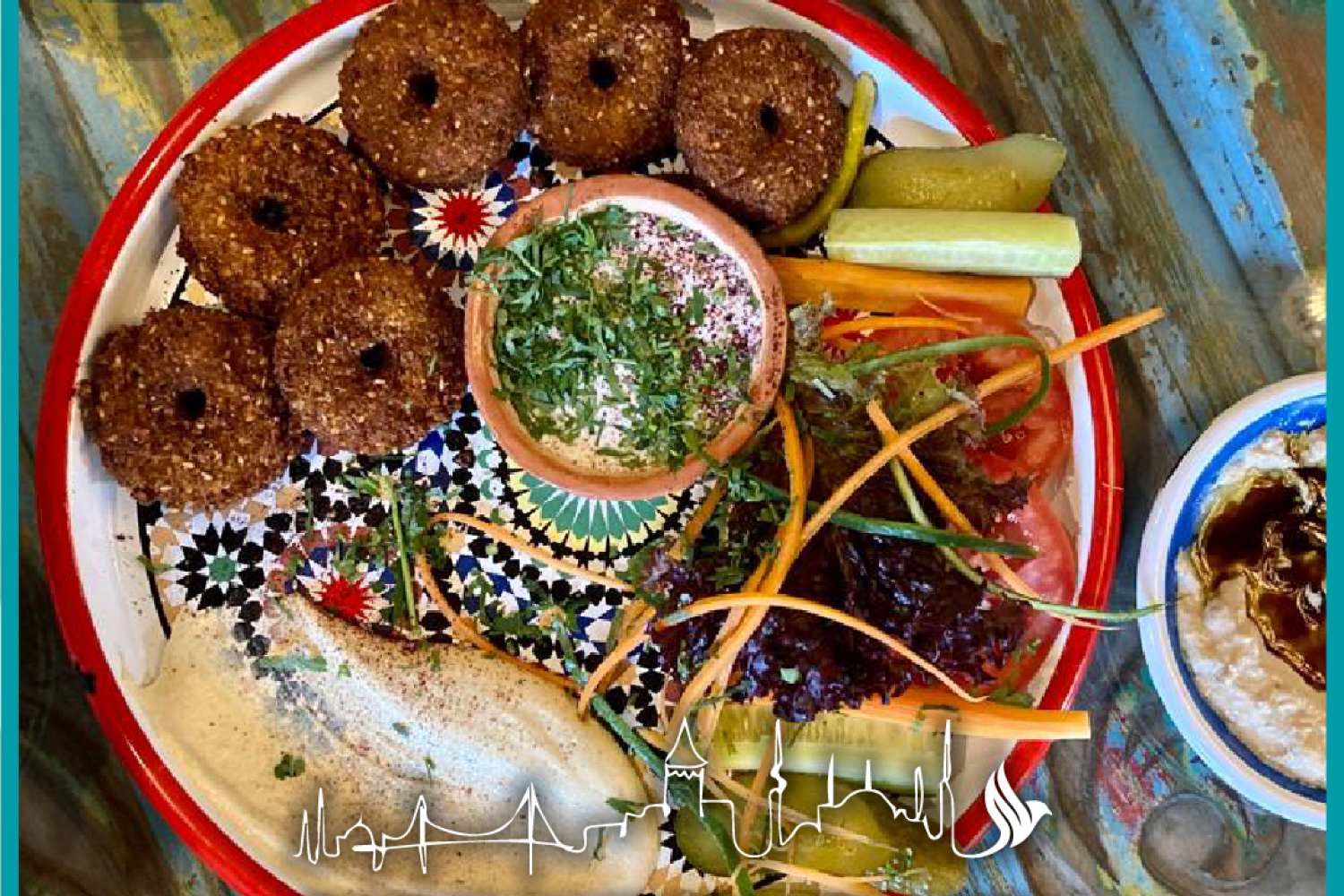Istanbul hosted four different empires, from Rome, Byzantium, the Latin Empire to the Ottoman Empire. At the same time, Istanbul has become the most important port of the Black Sea and Mediterranean maritime trade, with its location at the crossroads of commercial and cultural exchanges between three continents, the bridge of the silk and spice routes extending from China and the Arabian peninsula to the west. Fascinating with its history, architecture and geographical features, Istanbul has always had a special place among world cuisines with her cuisine.
Her rich historical background and multicultural structure made the greatest contribution to the enrichment of Istanbul cuisine. With its establishment as a colony of the Megarians in the Istanbul 7th century, B.C. was the first influence by the cultural elements of Ancient Greece. The cultural experiences of an empire that spread all over the world enriched Istanbul, which later continued on its way as the Roman Empire and the Eastern Rome. With the conquest in 1453, this wealth was blended with the traditions of the Muslim Turks. In Istanbul, which embraces different ethnic communities with tolerance, Sephardic Jews, Armenians, Levantines, Circassians, Georgians, people from Aegean islands, Epiruses, Pontians, Cappadocians made the city’s culinary culture the richest in the world.
In Istanbul, where the Mediterranean and the Black Sea meet, the inhabitants of the city were fed with abundant and varied seafood, on the other hand, fresh fruit and vegetables were supplied to the city from the vineyards and gardens located in and outside the city walls. The needs of Istanbul were met not only from its immediate surroundings, but also from a vast geography stretching from Thrace and the Aegean to the Black Sea, the Mediterranean, and Egypt.
In the Byzantine and Ottoman periods, apart from the consumption of fresh fish, the caught fish met the need in all four seasons of the year with brine, smoking and sun drying methods. “Thinomayirema” (lakerda) and kipper were among the daily foods that the large masses of the people, monks in monasteries, did not miss from their tables by adding wine to bread. The poet Ptohoprodromos (12-13th century) states in his poems that satirize the monastic life, that the chief priests had various dishes, expensive and delicious fish, and valuable wines on their tables, while ordinary monks were fed with rotten pieces of acorn and lakerda.
There were butcher shops, liver shops, poultry shops, numerous orchards inside and outside the city walls, and Istanbul was surrounded by vineyards. On the Anatolian side, the Kalamış valley was filled with various fruit trees, especially almond and peach trees. There were vineyards in the region from Kalamış bay to Izmit, and the famous sergeant grapes (Çavuş Üzümü in Turkish) were grown in these vineyards. At that time, Hartalimi (Kartal), a small village on the shores of Marmara, was known for its gardens-especially okra, vineyards and wines-as well as fishing.
Local production alone, although abundant and varied, was not enough to feed the city. The wholesale trade of foodstuffs has always continued on the shores of the Golden Horn. Barges and ships docked at the Golden Horn day and night, carrying food from all over the world. These goods were offered to the public in the bazaars and inns (han in Turkish) in the nearby region. The inns around Eminönü Tahtakale have largely continued their functions since then. Inns such as Flour Trap, Honey Trap, Oil Trap (in Galata), fish market and dried fruit shops, poultry and egg shops, food warehouses, merchant warehouses that distribute to retailers and peddlers have been alive for centuries. It used to extend from Eminönü square to the Flour Trap area, where the flour warehouses are located, to the place where the fisherman’s trustee, who supervised the fisheries, was located a little further. Adjacent to Eminönü Square, behind the Spice Bazaar, were grain sellers, cheese wholesalers and salted fish merchants. Some of these products were Reşit rice, Midilli and Crete soap, Kayseri pastrami (pastırma), Edirne Kashar cheese, Rize dry beans, Varna pickled vine leaves, Samatya sausage, Genoa and Trieste pasta. In Eminönü, past Zindankapı from Yemiş Pier, the city’s fish house was located. Bluefish, bonito, chinakoplar fish caught in the Bosphorus, tuna caught off Yassı and Sivri Ada and swordfish came here. The most famous restaurants and fishermen’s shops of Istanbul would come to the fish house and buy the fish sold by auction.
Olive oil had an important place in both trade and culinary culture since Byzantine times. Byzantium banned the import of olive oil for a period. In the Ottoman period, first quality olive oil came from Ayvalık and second quality olive oil came to Istanbul from Edremit. Greek merchants were engaged in the olive oil trade. Olive oil was poured from wooden barrels into tins and soldered. Traders who have never smoked, after taking a sip of these olive oils as a taster, would indicate from which region it was sent and its oxidation.
Products such as feta cheese, cheddar, butter, and lakerda were stored in the icehouses. The best cheese used to come from Edirne. The Jewish minority in Edirne were professionals in cheese. Cheese comes from Edirne by train in Sirkeci region and cheese trade is mostly done in this region.
Until recently, the variety offered by street vendors in Istanbul was much more. Muslim or Christian Albanian liver sellers used to cut the famous Albanian liver into small pieces and fry it, and sell it as a portion or between bread with finely chopped onion and parsley.
Greek, Jewish and Armenian peddlers cook stuffed mussels or mackerel with olive oil the night before, arrange them on trays or baskets during the day and sell them outside the taverns in districts such as Galata, Tophane, Yenikapı and Balat. People from Safranbolu were experts in pastry. Itinerant bread sellers were mostly Armenians. The sale of fried bonito in a boat on both sides of the Galata Bridge dates back to the 1950s. The streets of Istanbul were filled with vendors assigned to feed the city, with mobile pickles, milk vendors, boza makers, cider, yoghurt vendors, ice cream vendors, and vegetable and fruit vendors.
Today, when we think of Istanbul’s famous tastes, the first thing that comes to mind is Sultanahmet Meatballs, Ortaköy Kumpiri, Sarıyer Böreği, Fish Bread in Eminönü, Uykuluk in Sutluce, Dry Bean Soap in Süleymaniye, Vefa Boza, Kanlıca Yoghurt, Pierre Loti Coffee, and Beyoğlu Chocolate.
Of course, the flavors that Istanbul offers today are not limited to these. Istanbul continues to offer unique flavors to the residents and guests of the city with a new blend of restaurants. It should be indispensable to taste these delicacies on your trips to Istanbul. First of all, you can consider gastronomic tours to taste these delicacies. Now Istanbul is home to another cultural richness. Offering dishes from countries such as Syria, Lebanon, Uzbekistan, Iran and India, Istanbul offers another cultural richness that can be considered new for Istanbul.
We still have various taverns in Istanbul that offer delicious appetizers. The best addresses for quality food are also in Istanbul. Istanbul is still the best place to eat according to your taste, desire and budget. Because although Istanbul does not live the days of the empire, it continues to be the center of attraction for a very wide geography in the world.





